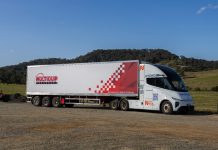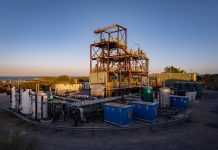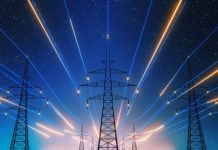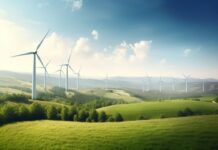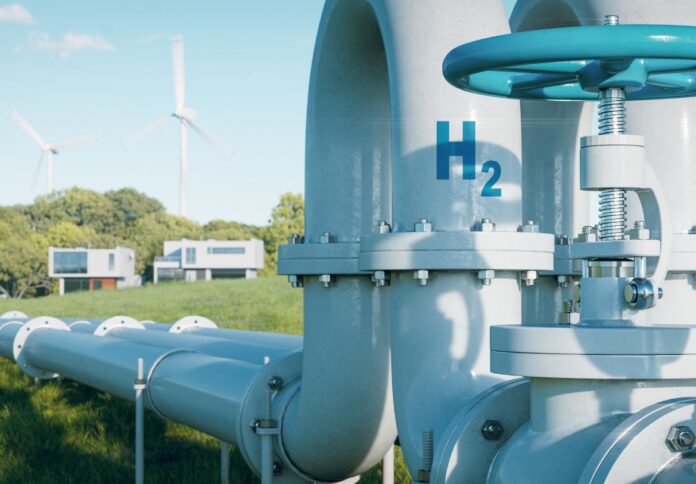
A critical new report by Climate Energy Finance (CEF) underscores the urgent need to electrify and decarbonise the Pilbara region, warning that Australia’s $250 billion future green iron industry is at risk if action is not taken immediately.
Released today, the report titled SUPERPOWERING-UP reveals that without decisive steps to establish a common-user electricity grid infrastructure (CUI) in the Pilbara, Australia may miss out on its largest potential export opportunity.
The report emphasises that the Pilbara’s transformation is key to doubling the nation’s iron exports by producing green iron, crucial for maintaining Australia’s position as a global economic leader in the resources sector.
According to CEF, the Pilbara, known as Australia’s resources engine room and the world’s largest iron ore exporter, currently relies heavily on fossil fuels.
The mining industry consumes approximately 2.4 billion litres of heavily subsidised, high-emission diesel annually.
The report finds that replacing this energy demand with renewable electricity would require 16.66 terawatt hours (TWh) per year, which is equivalent to 7.8% of Australia’s National Electricity Market (NEM).
The report advocates for the development of a CUI, which it claims is essential for decarbonising the Pilbara.
Such infrastructure could catalyse over $50-100 billion in new investment for renewable energy, battery firming, and transmission projects.
These investments would enable the onshore processing and value-adding of the Pilbara’s vast reserves of critical minerals, strategic metals, and energy transition materials, including green iron, using zero-emission power.
The CEF report highlights the escalating global competition in value-adding strategic metals and minerals, the decline of fossil fuels, and the expansion of carbon border tariffs as critical factors necessitating swift action.
The report warns that Australia must pivot rapidly from its reliance on coal and gas exports to embrace the green transition or risk falling behind.
Tim Buckley, CEF Director and co-author of the report, emphasised the urgency, stating, “The threat of our key Asian trade partners progressively decarbonising their steel industries is absolutely clear for Australia’s major exports of iron ore from the Pilbara and coking coal from Queensland.”
He continued, “These two powerhouses have served Australia exceptionally well. But now is the time to invest in both new technology developments and the enabling grid and renewable energy infrastructure needed to facilitate the export of ‘embodied decarbonisation’ in the form of green iron.”
Strategic recommendations
The report outlines several key recommendations to expedite the decarbonisation of the Pilbara:
- Social Licence and First Nations Equity Participation: Prioritising consultation and agreement with First Nations peoples on energy infrastructure to ensure equitable participation.
- Overriding Public Interest Principles: State and Federal governments should incorporate these principles into environmental approval processes for renewable energy projects to overcome barriers and expedite approvals.
- Strategic Public Investment: The Federal Government should prioritise the Pilbara for public investment under the Future Made in Australia Act, encouraging private finance to follow.
- Deployment of Concessional Financing: The WA and Federal Governments should urgently deploy the $3 billion Clean Energy Finance Corporation (CEFC) concessional financing committed to WA, facilitating private capital investment in a Pilbara CUI.
- Comprehensive Grid Infrastructure Plan: The WA Government should lead the development and near-term implementation of a comprehensive CUI plan, collaborating with federal counterparts and key industry stakeholders.
Industry and expert endorsements
The report has garnered support from key industry leaders and experts, including former Chief Scientist Dr Alan Finkel, who emphasised the critical need for streamlined approvals for grid and clean energy infrastructure and greater collaboration with Traditional Custodians of the land.
Marilyne Crestias, Interim CEO of the Clean Energy Investor Group, highlighted the immense opportunities for driving the decarbonisation of Australia’s export economy through measures such as the CUI and the Overriding Public Interest test for renewable energy developments.
Joanna Kay, General Manager of Zero Carbon Hydrogen Australia & Smart Energy Council, underscored the potential of hydrogen in transforming Australia’s iron ore exports into high-value green iron, reinforcing the need for strategic capital support for green hydrogen-based metals refining in the Pilbara.


